Wastewater Treatment
Siemens Water Technology Corp. Biological Books Overview Ri y, , adh , KSA , June 19 , 2007
Views : 6
Siemens Water Technology Corp. Biological Books Overview Ri y, , adh , KSA , June 19 , 2007
Source https://www.siemens.com
Usually dispatched in 2 to 3 days
Usually dispatched in 2 to 3 days
Category:
Wastewater Treatment
Only logged in customers who have purchased this product may leave a review.
Related books
Adsorption And Biological Filtration In Wastewater Treatment
Over the last few decades adsorption has gained paramount importance in industry and environmental protection. Adsorption processes are widely applied for separation and purification because of the high reliability, energy efficiency, design flexibility, technological maturity and the ability to regenerate the exhausted adsorbent. One method of important extending the adsorption treatment processes is biofiltration. The biological filter relies on the activities of the community of micro-organisms that become attached onto the filter media. Microbes oxidize organic matters in water to produce energy and therefore available nutrients sources in feed water are essential for their development. Biofiltration can effectively remove organic matter that is not able to be removed from water and biologically treated sewage effluent in conventional sewage treatment. The microbial attachment process, the factors that influence biological filtration, the kinetics of microbial growth and details of the microbial community in the biofilter are discussed in detail. There are several types of biofilters including submerged filters, trickling filter, bed filter, fluidised bed. The different biofilters are described and a comparison between them is provided. The application of biofilters for treating various types of wastewater effluent is detailed.
Adsorption And Biological Filtration In Wastewater Treatment
Over the last few decades adsorption has gained paramount importance in industry and environmental protection. Adsorption processes are widely applied for separation and purification because of the high reliability, energy efficiency, design flexibility, technological maturity and the ability to regenerate the exhausted adsorbent. One method of important extending the adsorption treatment processes is biofiltration. The biological filter relies on the activities of the community of micro-organisms that become attached onto the filter media. Microbes oxidize organic matters in water to produce energy and therefore available nutrients sources in feed water are essential for their development. Biofiltration can effectively remove organic matter that is not able to be removed from water and biologically treated sewage effluent in conventional sewage treatment. The microbial attachment process, the factors that influence biological filtration, the kinetics of microbial growth and details of the microbial community in the biofilter are discussed in detail. There are several types of biofilters including submerged filters, trickling filter, bed filter, fluidised bed. The different biofilters are described and a comparison between them is provided. The application of biofilters for treating various types of wastewater effluent is detailed.
A study on The Removal of Some Phenolic Compounds from Wastewater
ABSTRACT:
The removal by means of Advanced Oxidation Processes (AOPs) is an attractive option for the treatment of industrial wastewater containing phenolic compounds in an environmental . The present work would summarize some AOPs technologies focusing only on heterogeneous catalytic removal of phenol and highlighting the catalysts activity and reaction conditions. The catalysts used were H ZSM-5,H-Mordenite and Bentonite. H-ZSM-5,H-Mordenite doped with Platinum (Pt) were prepared and characterized by using X-ray diffraction analysis (XRD), thermal analysis, Scanning electron microscopy, High Resolution Transmission electron microscopy, pluse titration measurements, nitrogen adsorption desorption at -196°C. the experimental parameters affecting the removal efficiency were time, temperature, pH, initial phenol concentrations, catalyst dose and the effect of irradiating with Ultraviolet (UV –C) were studied . The optimum conditions for the removal of each catalyst were investigated .
A study on The Removal of Some Phenolic Compounds from Wastewater
ABSTRACT:
The removal by means of Advanced Oxidation Processes (AOPs) is an attractive option for the treatment of industrial wastewater containing phenolic compounds in an environmental . The present work would summarize some AOPs technologies focusing only on heterogeneous catalytic removal of phenol and highlighting the catalysts activity and reaction conditions. The catalysts used were H ZSM-5,H-Mordenite and Bentonite. H-ZSM-5,H-Mordenite doped with Platinum (Pt) were prepared and characterized by using X-ray diffraction analysis (XRD), thermal analysis, Scanning electron microscopy, High Resolution Transmission electron microscopy, pluse titration measurements, nitrogen adsorption desorption at -196°C. the experimental parameters affecting the removal efficiency were time, temperature, pH, initial phenol concentrations, catalyst dose and the effect of irradiating with Ultraviolet (UV –C) were studied . The optimum conditions for the removal of each catalyst were investigated .
Aerated Ponds
The content of this technical sheet on “aerated ponds” is based primarily on the following publications:
“Aerated Pond”, compiled by Eawag (Swiss Federal Institute of Aquatic Science and Technology),
Dorothee Spuhler (international Gmbh) published on SSWM (http://www.sswm.info) (2015).
“Aerated, partial mix lagoons”, Technology Fact Sheet 832-F-02-008, published by U.S. EPA (2002).
“Principles of design and operations of wastewater treatment pond systems for plant operators,
engineers, and managers”, EPA/600/R-11/088, published by U.S. EPA (August 2011).
Aerated Ponds
The content of this technical sheet on “aerated ponds” is based primarily on the following publications:
“Aerated Pond”, compiled by Eawag (Swiss Federal Institute of Aquatic Science and Technology),
Dorothee Spuhler (international Gmbh) published on SSWM (http://www.sswm.info) (2015).
“Aerated, partial mix lagoons”, Technology Fact Sheet 832-F-02-008, published by U.S. EPA (2002).
“Principles of design and operations of wastewater treatment pond systems for plant operators,
engineers, and managers”, EPA/600/R-11/088, published by U.S. EPA (August 2011).
Advanced Wastewater Treatment Technologies
Wastewater, also written as waste water, is any water that has been adversely affected in quality by anthropogenic influence. Wastewater can originate from a combination of domestic, industrial, commercial or agricultural activities, surface runoff or storm water, and from sewer inflow or infiltration. Municipal wastewater (also called sewage) is usually conveyed in a combined sewer or sanitary sewer, and treated at a wastewater treatment plant. Treated wastewater is discharged into receiving water via an effluent pipe. Wastewaters generated in areas without access to centralized sewer systems rely on on-site wastewater systems. These typically comprise a septic tank, drain field, and optionally an on-site treatment unit. The management of wastewater belongs to the overarching term sanitation, just like the management of human excreta, solid waste and storm water (drainage). Industrial wastewater is defined as any wastewater generated from any manufacturing,
processing, institutional, commercial, or agricultural operation, or any operation that discharges other
than domestic or sanitary wastewater.
Advanced Wastewater Treatment Technologies
Wastewater, also written as waste water, is any water that has been adversely affected in quality by anthropogenic influence. Wastewater can originate from a combination of domestic, industrial, commercial or agricultural activities, surface runoff or storm water, and from sewer inflow or infiltration. Municipal wastewater (also called sewage) is usually conveyed in a combined sewer or sanitary sewer, and treated at a wastewater treatment plant. Treated wastewater is discharged into receiving water via an effluent pipe. Wastewaters generated in areas without access to centralized sewer systems rely on on-site wastewater systems. These typically comprise a septic tank, drain field, and optionally an on-site treatment unit. The management of wastewater belongs to the overarching term sanitation, just like the management of human excreta, solid waste and storm water (drainage). Industrial wastewater is defined as any wastewater generated from any manufacturing,
processing, institutional, commercial, or agricultural operation, or any operation that discharges other
than domestic or sanitary wastewater.
Lesson D1 Guidelines and Standards for Wastewater Reuse
Due to water shortage, wastewater reuse has gained great importance in many parts of the world. Wastewater reuse practices have become valuable source in water resources management. As an independent source of water, reclaimed water can increase the reliability of water supply. Reclaimed wastewater requires effective measures to protect public health and the environment. Strong wastewater reuse guidelines and regulations are developed for the purpose. It is difficult to establish wastewater guidelines and regulations that can suit all regions in the world. Among the broad reasons for this as limiting factors, are economics of countries relating chosen treatment technologies and additionally, the local context of a region must be taken into consideration in settings. Almost all wastewater reuse guidelines and regulations are bacteriological-based. Some of them consider biochemical parameters. In this lesson you will comprehend the importance as well as the necessity of setting wastewater reuse guidelines and regulations. You will be aware of arising problems
for getting universal valid standards. You will get an overview of guidelines and regulations existing worldwide and regionally.
Lesson D1 Guidelines and Standards for Wastewater Reuse
Due to water shortage, wastewater reuse has gained great importance in many parts of the world. Wastewater reuse practices have become valuable source in water resources management. As an independent source of water, reclaimed water can increase the reliability of water supply. Reclaimed wastewater requires effective measures to protect public health and the environment. Strong wastewater reuse guidelines and regulations are developed for the purpose. It is difficult to establish wastewater guidelines and regulations that can suit all regions in the world. Among the broad reasons for this as limiting factors, are economics of countries relating chosen treatment technologies and additionally, the local context of a region must be taken into consideration in settings. Almost all wastewater reuse guidelines and regulations are bacteriological-based. Some of them consider biochemical parameters. In this lesson you will comprehend the importance as well as the necessity of setting wastewater reuse guidelines and regulations. You will be aware of arising problems
for getting universal valid standards. You will get an overview of guidelines and regulations existing worldwide and regionally.
Chemical Cleaning Of Ultrafiltration Membrane After Treatment Of Oily Wastewater
Abstract:
Oily wastewaters and Oil–in-water emulsions are two of the major pollutants of the environment. Ultrafiltration (UF) membranes play an important role in the treatment and reuse of oily wastewaters. Fouling of UF membranes is typically caused by inorganic and organic materials present in wastewaters that adhere to the surface and pores of the membrane and result in the deterioration of performance with a consequent increase in energy costs and membrane replacement. In the experiments, polyacrylonitrile (PAN) and outlet wastewater of the API (American Petroleum Institute) separator unit of Tehran refinery as membrane and feed were used, respectively. Fouling and cleaning experiments were performed with oily wastewater and selected cleaning agents using a laboratory scale cross flow test unit. The results showed that metal chelating agent (ethylene diamine tetra acetic acid disodium salt-2-hydrate (EDTA)) and an anionic surfactant (sodium dodecyl sulfate (SDS)) were able to Clean the fouled UF membrane effectively by optimizing chemical (pH) and physical
(cleaning time, cross flow velocity (CFV) and temperature) conditions during cleaning. Flux recovery and resistance removal were found to improve with increasing CFV, temperature, pH, cleaning time and concentration of the cleaning chemicals. In this paper, the cleaning mechanism is also investigated.
Chemical Cleaning Of Ultrafiltration Membrane After Treatment Of Oily Wastewater
Abstract:
Oily wastewaters and Oil–in-water emulsions are two of the major pollutants of the environment. Ultrafiltration (UF) membranes play an important role in the treatment and reuse of oily wastewaters. Fouling of UF membranes is typically caused by inorganic and organic materials present in wastewaters that adhere to the surface and pores of the membrane and result in the deterioration of performance with a consequent increase in energy costs and membrane replacement. In the experiments, polyacrylonitrile (PAN) and outlet wastewater of the API (American Petroleum Institute) separator unit of Tehran refinery as membrane and feed were used, respectively. Fouling and cleaning experiments were performed with oily wastewater and selected cleaning agents using a laboratory scale cross flow test unit. The results showed that metal chelating agent (ethylene diamine tetra acetic acid disodium salt-2-hydrate (EDTA)) and an anionic surfactant (sodium dodecyl sulfate (SDS)) were able to Clean the fouled UF membrane effectively by optimizing chemical (pH) and physical
(cleaning time, cross flow velocity (CFV) and temperature) conditions during cleaning. Flux recovery and resistance removal were found to improve with increasing CFV, temperature, pH, cleaning time and concentration of the cleaning chemicals. In this paper, the cleaning mechanism is also investigated.
A Ground-Breaking Innovation In Wastewater Treatment
The fashion industry contributes 20% of industrial water pollution With a high water footprint, massive chemical use and atmospheric, water and greenhouse gas (GHG) emissions, dyehouse operations are the most environmentally damaging component of the apparel supply chain2.Global brands are responding by requiring manufacturers to treat wastewater and reduce effluent. Paradoxically, conventional water treatment systems generate toxic sludge, trading water pollution for solid, chemical discharge that is landfilled and emits GHG – mostly methane.
A Ground-Breaking Innovation In Wastewater Treatment
The fashion industry contributes 20% of industrial water pollution With a high water footprint, massive chemical use and atmospheric, water and greenhouse gas (GHG) emissions, dyehouse operations are the most environmentally damaging component of the apparel supply chain2.Global brands are responding by requiring manufacturers to treat wastewater and reduce effluent. Paradoxically, conventional water treatment systems generate toxic sludge, trading water pollution for solid, chemical discharge that is landfilled and emits GHG – mostly methane.
Innovative Process for Granulation of Continuous Flow Conventional Activated Sludge
The objective of this presentation is to:
• Introduce Aerobic Granular Sludge (AGS), including mechanisms for formation and benefits
• Present performance data for a Nereda® SBR pilot
• AECOM’s continuous-flow granular sludge process for BNR infra-stretching or footprint reductions
Innovative Process for Granulation of Continuous Flow Conventional Activated Sludge
The objective of this presentation is to:
• Introduce Aerobic Granular Sludge (AGS), including mechanisms for formation and benefits
• Present performance data for a Nereda® SBR pilot
• AECOM’s continuous-flow granular sludge process for BNR infra-stretching or footprint reductions
Module 13: General Administration of Wastewater Treatment Plants
.List the types of data collected at a plant.
.Analyze typical plant data.
.Describe methods for presenting plant data.
.Explain the frequency and types of reports utilized at a plant.
Module 13: General Administration of Wastewater Treatment Plants
.List the types of data collected at a plant.
.Analyze typical plant data.
.Describe methods for presenting plant data.
.Explain the frequency and types of reports utilized at a plant.


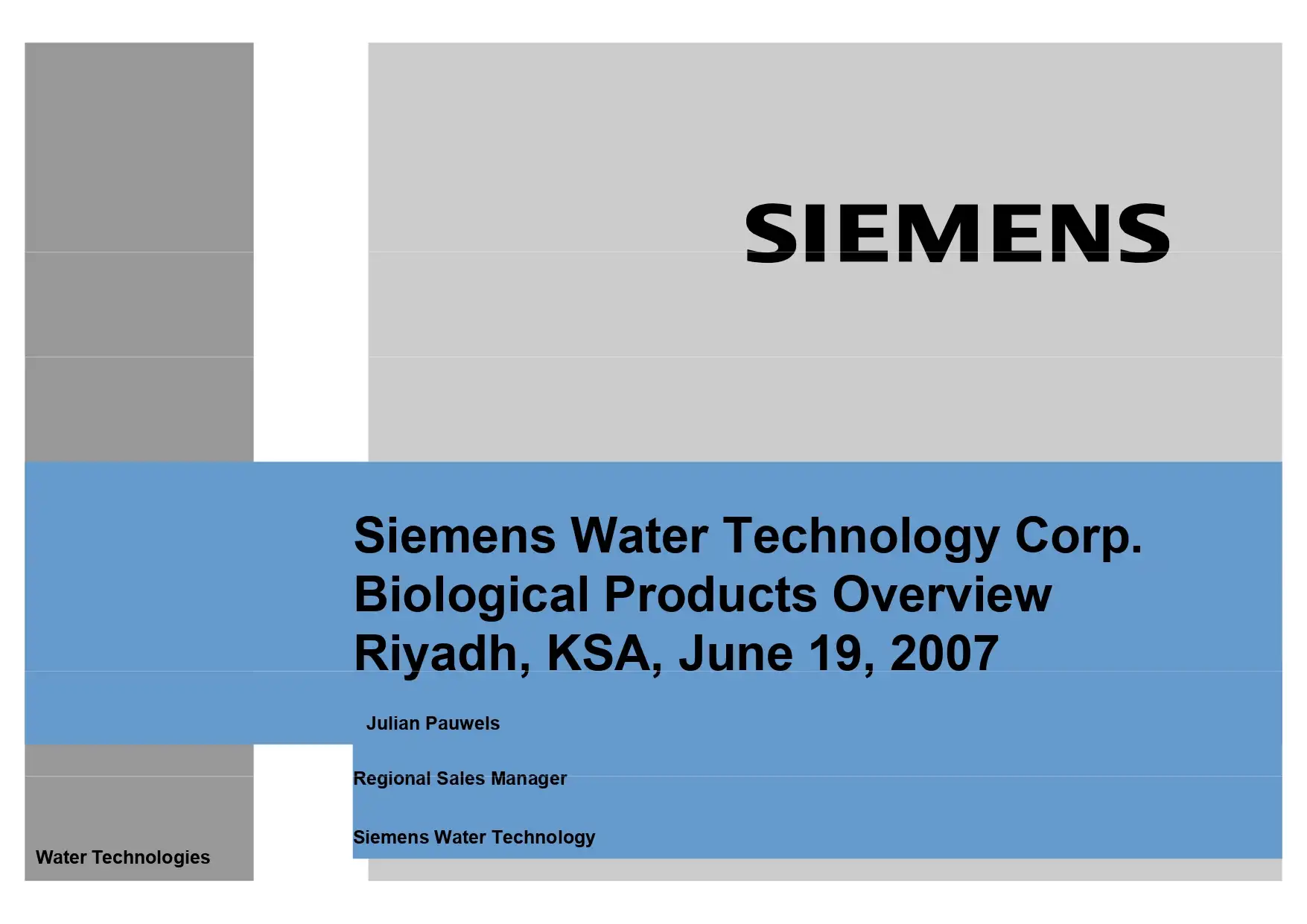
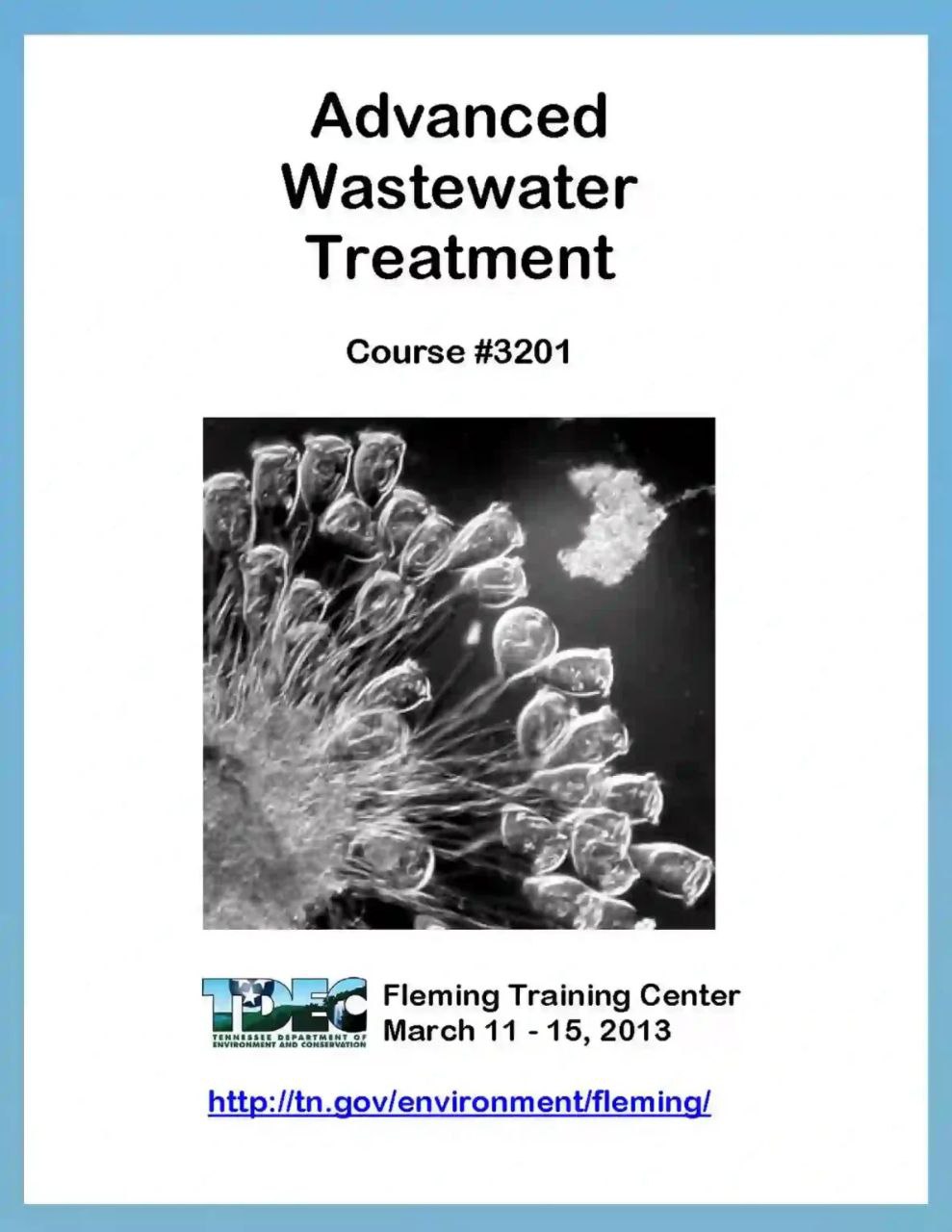
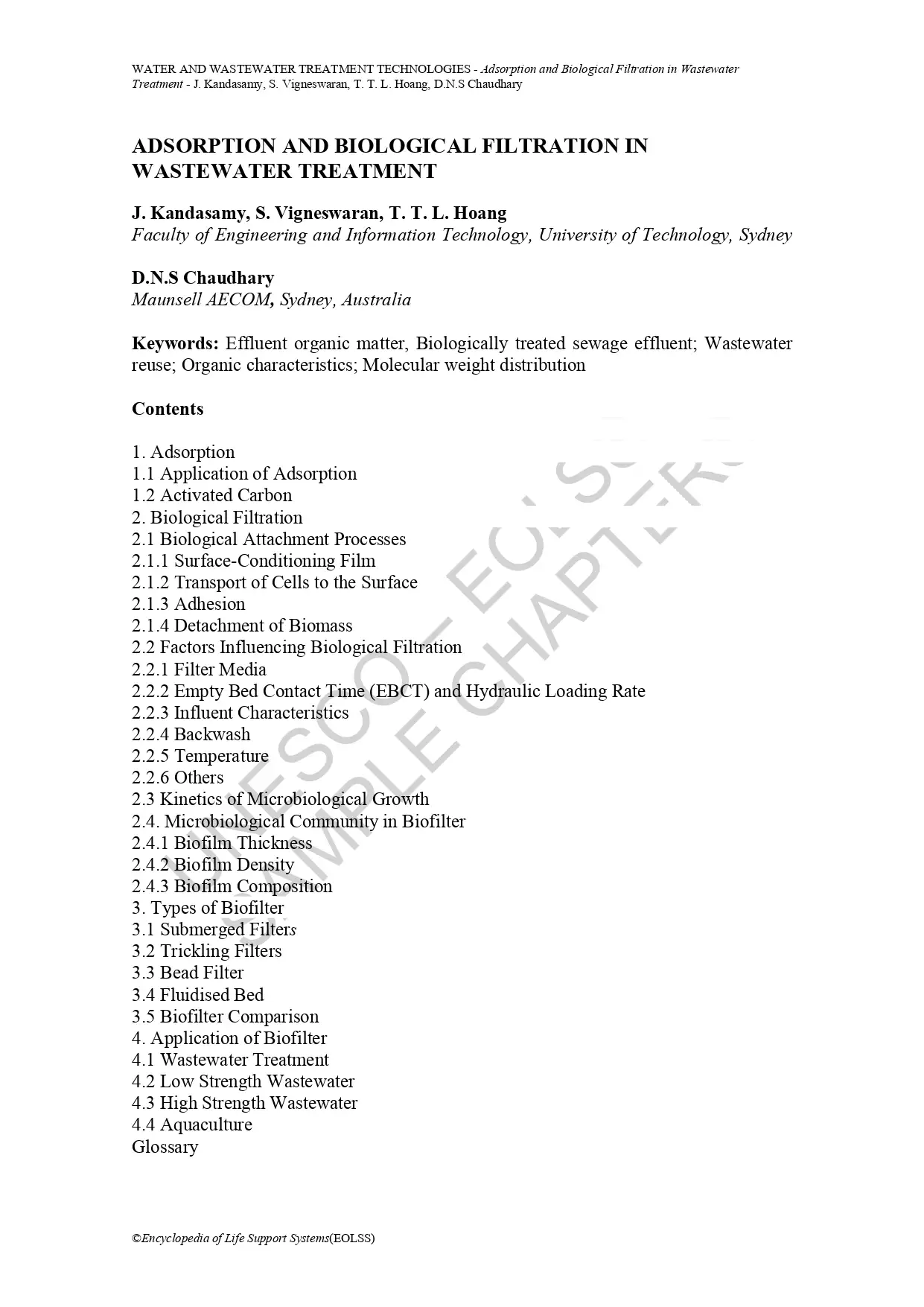
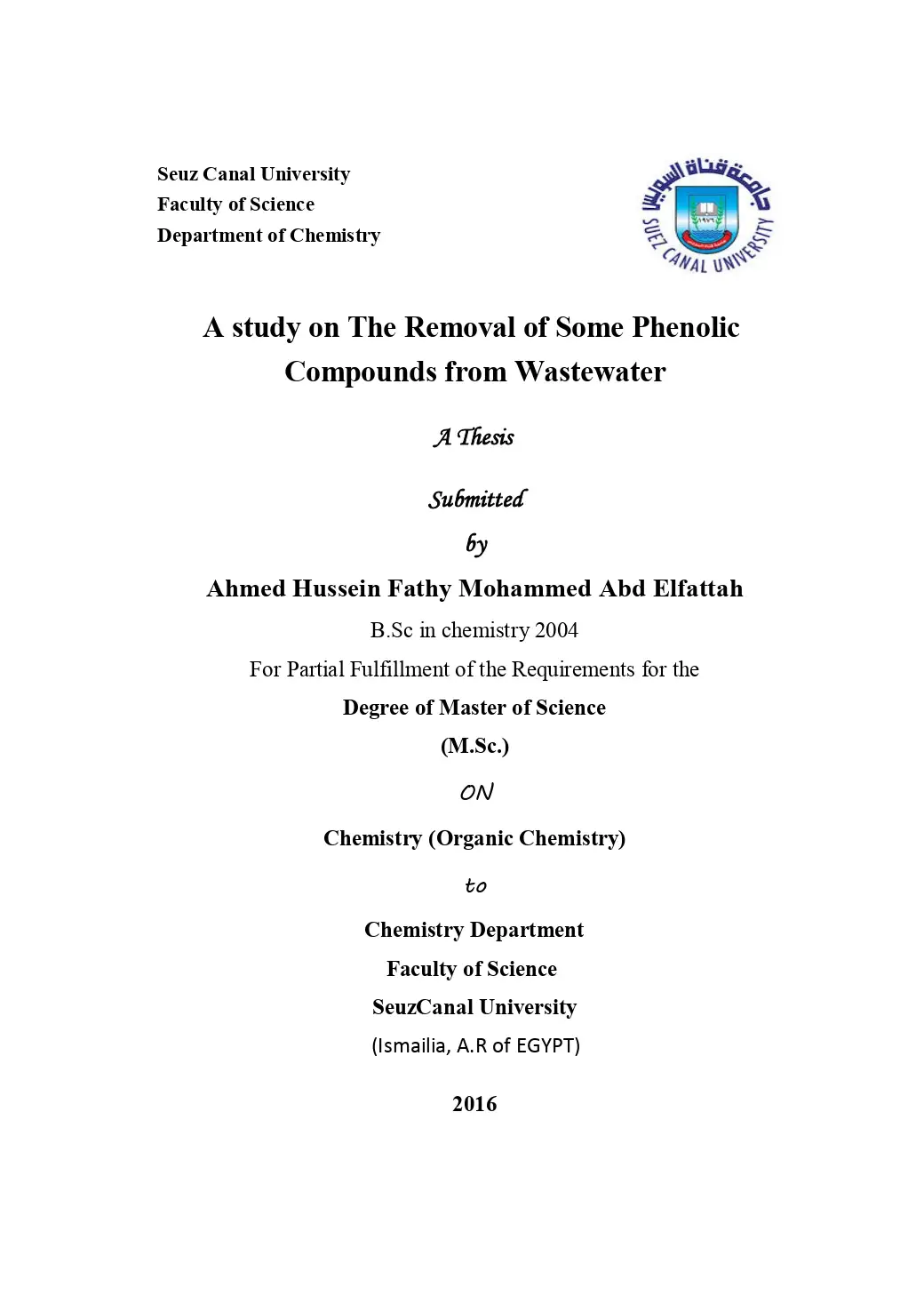

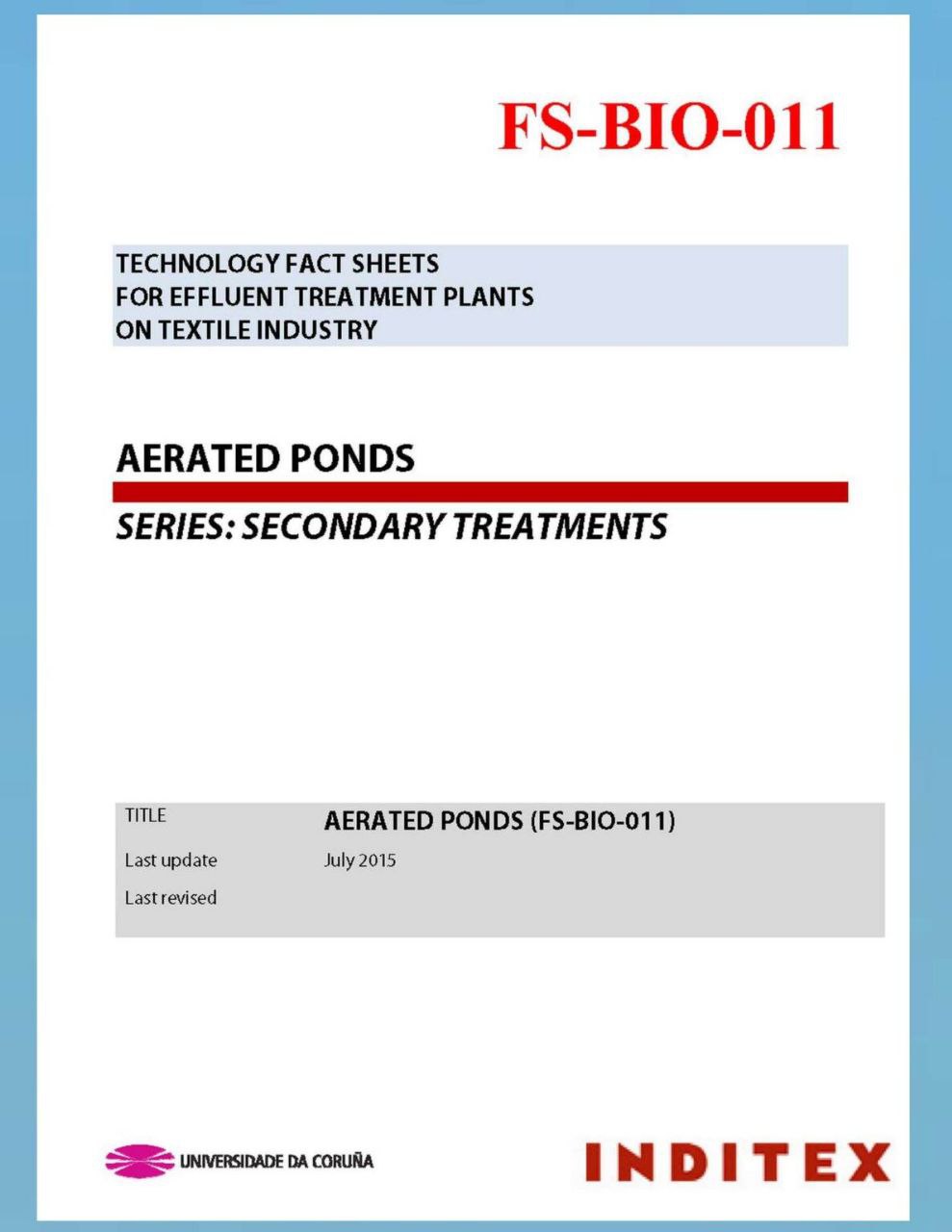

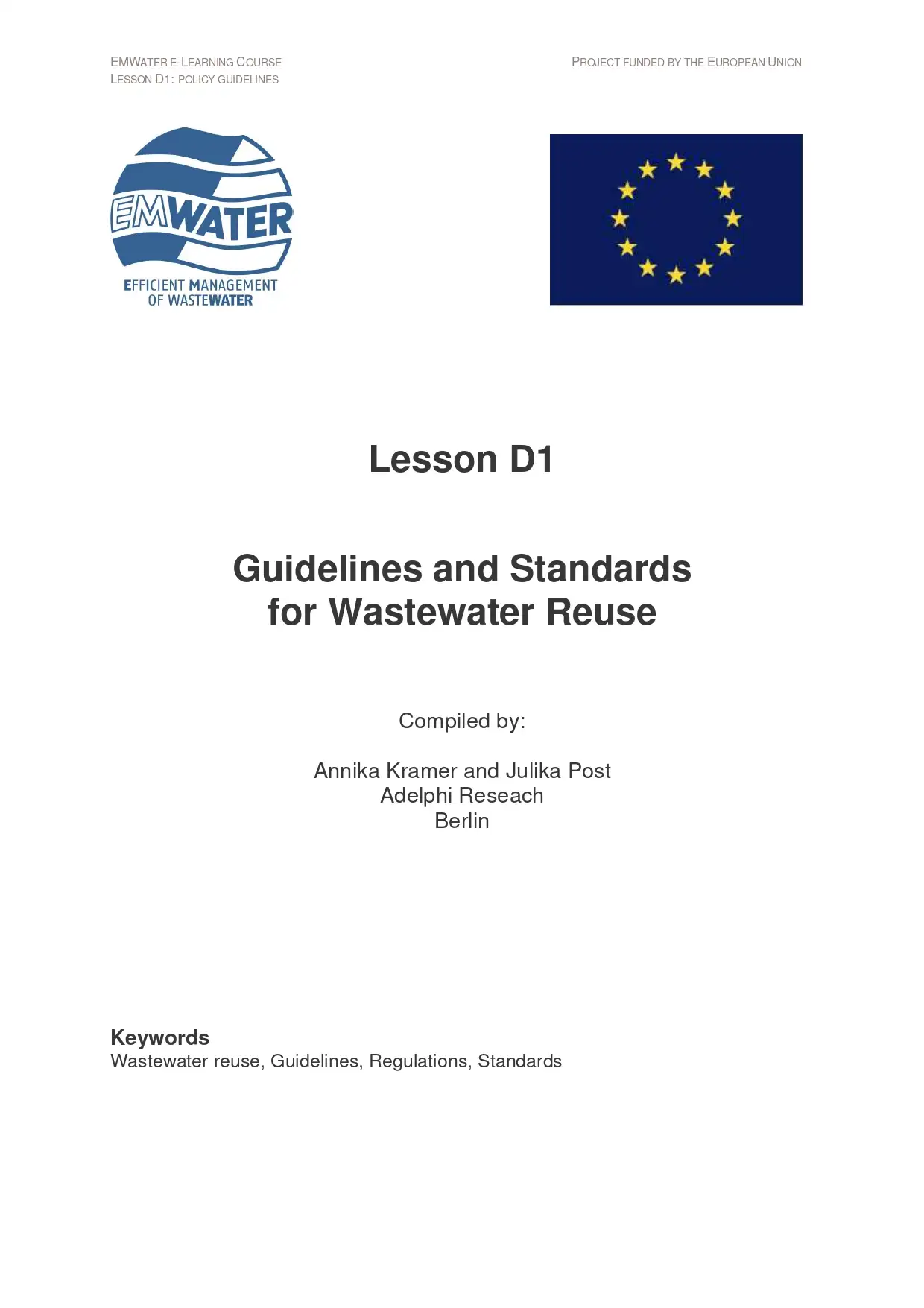
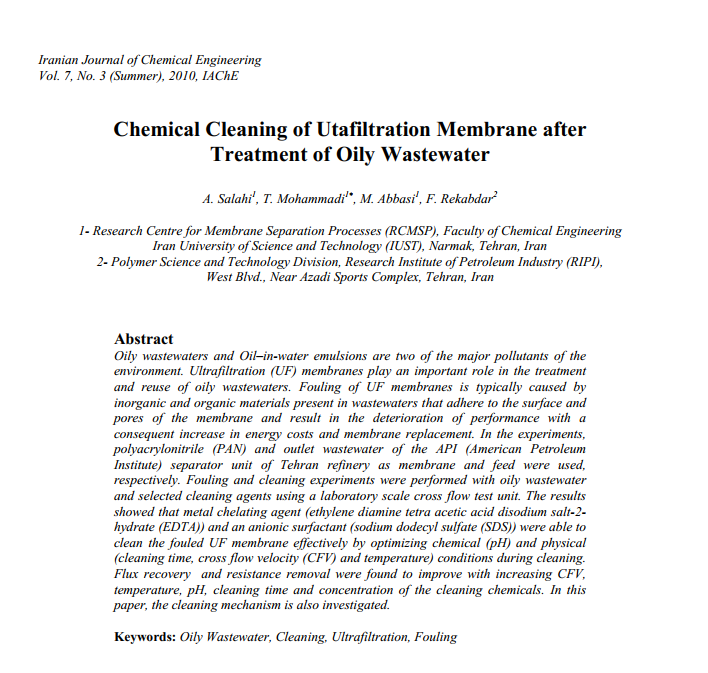
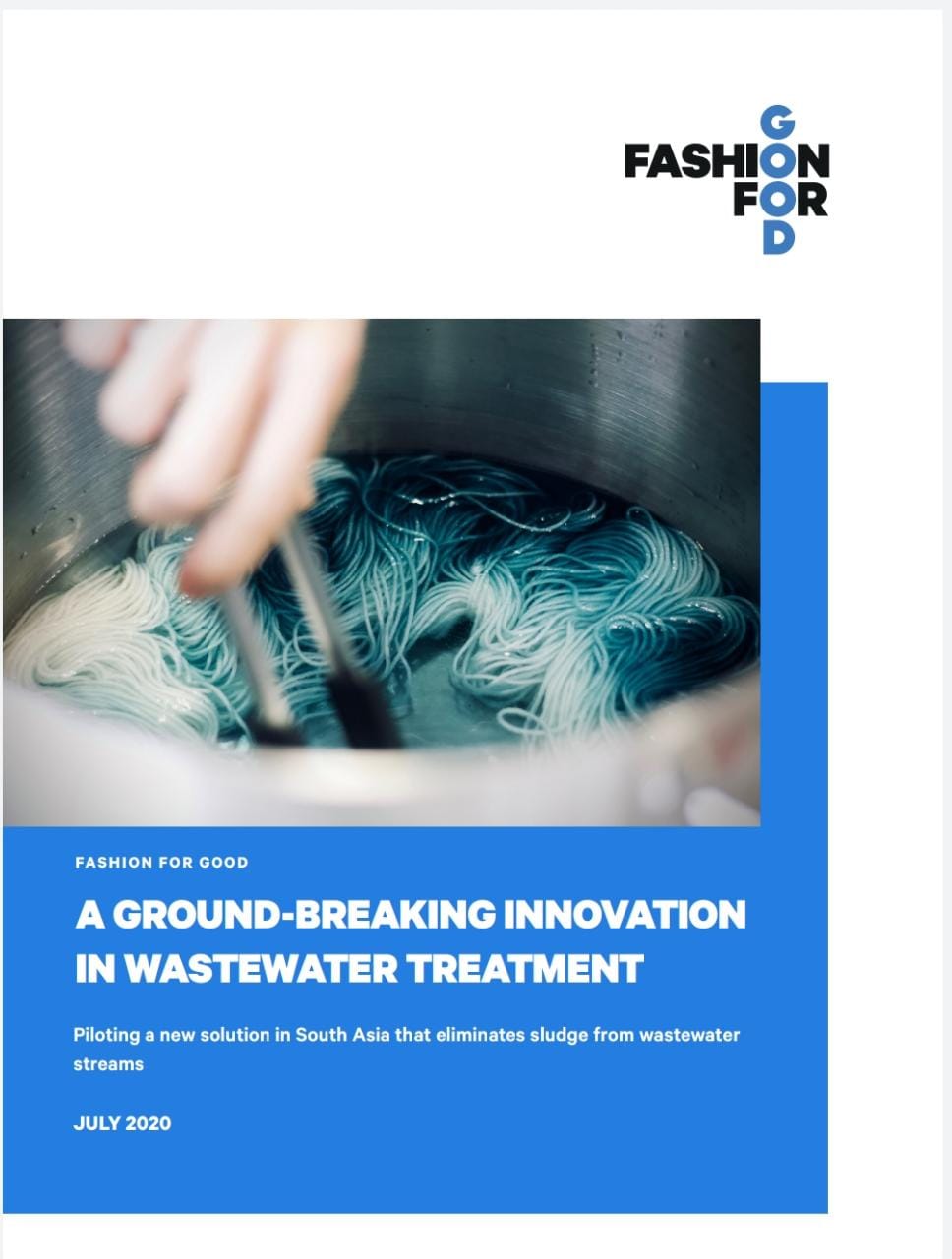
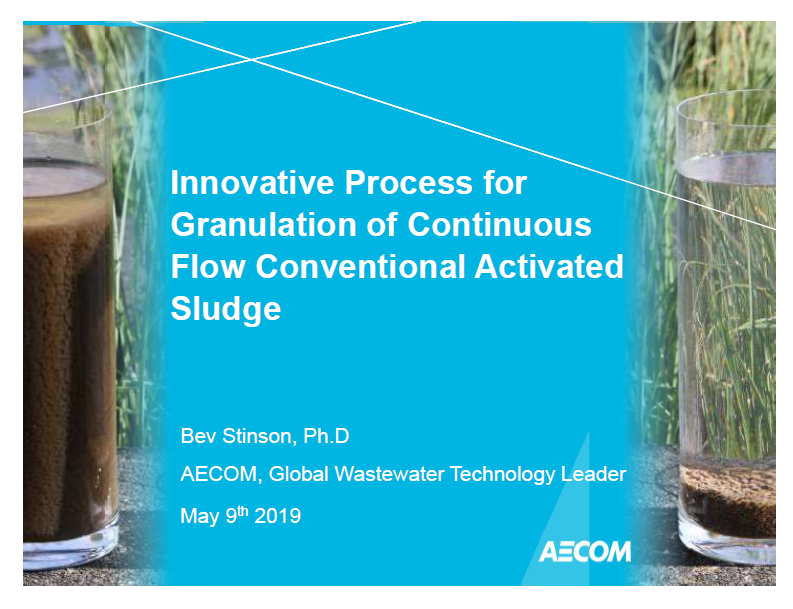
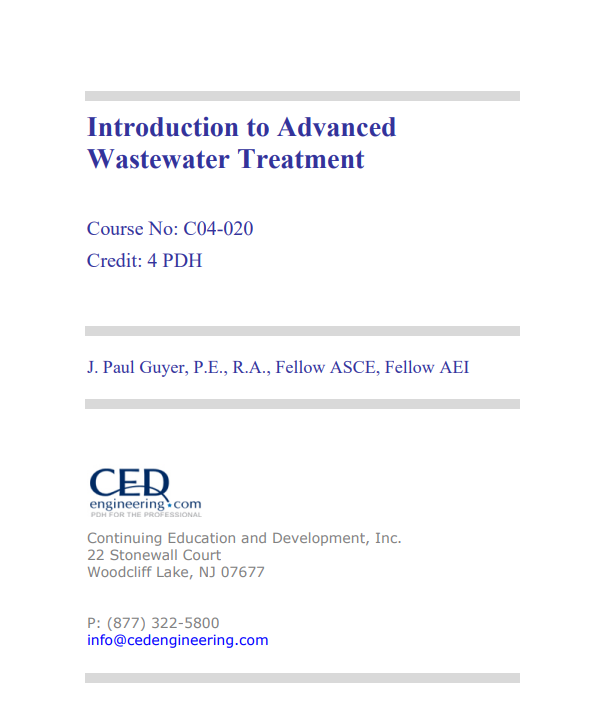
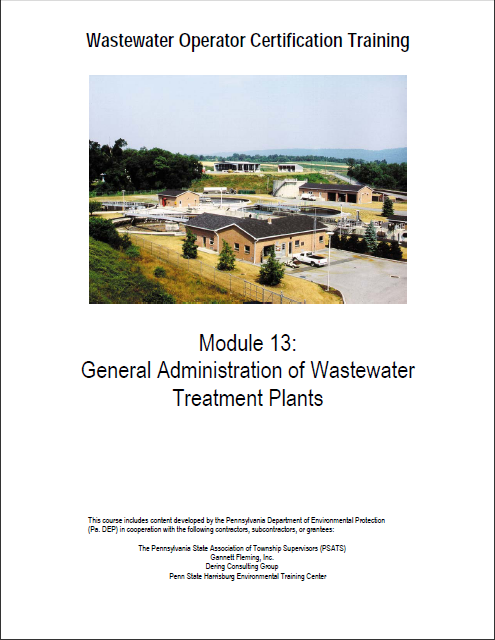
Reviews
There are no reviews yet.